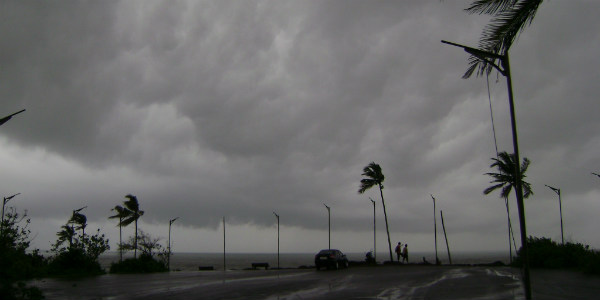
Monsoon systems in the form of low-pressure areas or cyclonic circulations drive Monsoon rains over various parts of the country.
One low-pressure area developed in the Bay of Bengal almost four days back. However, the system started its journey in a westerly, giving Monsoon rains over the eastern part of the country first, moving westwards.
The low-pressure area moved across West Bengal, adjoining Odisha and then towards Jharkhand, North Chhattisgarh, Northeast Madhya Pradesh and adjoining Uttar Pradesh, Central Madhya Pradesh and finally over Northwest Madhya Pradesh and adjoining Southwest Uttar Pradesh.
Presently, the system with a slight eastward shift can be seen over South Uttar Pradesh and adjoining Northwest Madhya Pradesh.
Courtesy this weather system, some good rains of varying intensity and duration occurred over West Bengal, Jharkhand, Madhya Pradesh, and Uttar Pradesh. Especially, between July 23 and 24, the rains were almost two to three times more than their normal, specifically in parts of Madhya Pradesh.
[yuzo_related]
These rains helped in curbing the rainfall deficiency of the rain deficient states like West Bengal, Jharkhand, Madhya Pradesh and Uttar Pradesh.
At present, Uttar Pradesh is highly rainfall deficit state with the rainfall deficiency of 40%, Jharkhand’s rainfall deficiency stands at 32%, and West Bengal is rainfall deficient by 23%. However, due to excessive flood causing rains, Madhya Pradesh and Chhattisgarh are both rain surplus by 14% and 4% respectively.
As per Skymet Weather, the low-pressure area has become slow-moving and has become stagnant over South Uttar Pradesh and Northwest Madhya Pradesh. In addition to this, the Western Disturbance is also existing over the region and the axis of Monsoon trough is also seen oscillating in the proximity of this system.
Due to all the above-mentioned weather features, widespread rains along with some heavy to extremely heavy rains occurred over the northern part of the country, including the northern hills on the past day. Few regions even reported rains in three-digits.
In the last 24 hours from 08:30 am on Wednesday, Orai recorded the most 208 mm of rains, Mussoorie recorded 175 mm of hefty rains, followed by Dharamsala with 134 mm of rains, Agra 115 mm, Anantpur Sahib 105 mm, Nainital 103 mm, Nowgong 97 mm, Tikamgarh 84 mm, Jhansi 78 mm, Moradabad 67 mm, Pathankot 65 mm, Shahjahanpur 60 mm, and Kanpur, and Bareilly recorded 59 mm of rains each.
For the next 24 hours, moderate with isolated heavy rains are likely to continue over parts of Madhya Pradesh and Uttar Pradesh. Thereafter, the Western Disturbance is likely to move eastwards. The low-pressure area is also likely to become less marked and weaken into a cyclonic circulation. In the wake of this, the rains may also reduce its intensity.
Then, these rains would affect Indo-Gangetic Plains like West and Central Uttar Pradesh, Bihar, and foothills of Uttar Pradesh and Bihar. The intensity, in fact, may be higher over the foothills and thus, the situation is watchful against swelling rivers against excess rains in the catchment areas.
Image Credit: Shining India News
Any information taken from here should be credited to skymetweather.com


